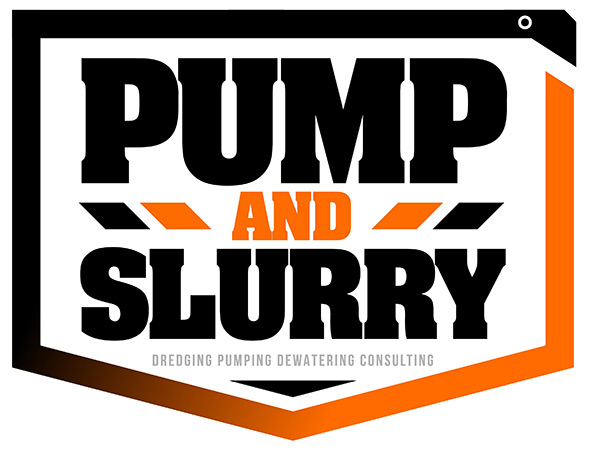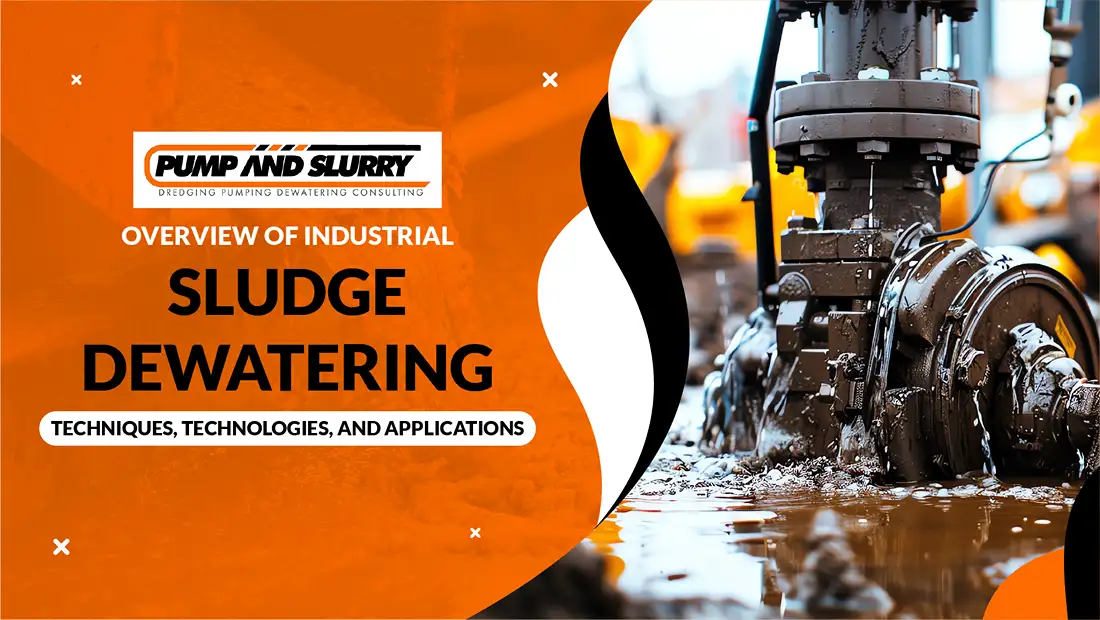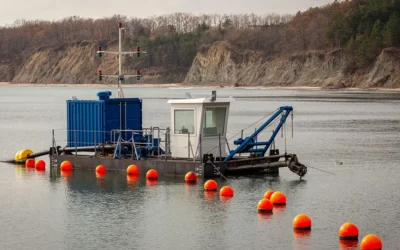Introduction
Industrial sludge dewatering plays a pivotal role in wastewater treatment and waste management across various industries. With increasing concerns about environmental sustainability, industrial sludge dewatering has become a key process to minimize waste, reduce disposal costs, and recover valuable resources. This process helps industries handle the large volumes of sludge generated during industrial operations by reducing its water content, making disposal more manageable and environmentally friendly.
Sludge, which is a by-product of industrial wastewater treatment, consists of water, solid particles, and contaminants. The volume of sludge generated can be overwhelming, posing challenges for industries in terms of disposal and treatment. Industrial sludge dewatering is the key to tackling these challenges. The process reduces the water content of the sludge, making it easier to handle, transport, and dispose of.
The primary goal of industrial sludge dewatering is to reduce the volume of sludge, thus cutting down transportation and disposal costs while improving the sustainability of industrial operations. Industrial dewatering pumps play a crucial role in this process, as they help move sludge efficiently through the dewatering stages.
As industries continue to focus on sustainability, the need for effective industrial dewatering technologies has never been greater. These technologies not only help meet environmental regulations but also improve the overall efficiency of operations.
In this article, we will explore the essential techniques, technologies, and applications of industrial sludge dewatering. We will also look at the role of industrial dewatering pumps in this process, as they are crucial in managing the movement of sludge and ensuring efficiency in dewatering operations.
2. What is Industrial Sludge Dewatering?
It refers to the process of removing water from sludge, which is generated during industrial wastewater treatment. The sludge often contains water, organic materials, chemicals, and sometimes heavy metals, making it difficult to dispose of without proper treatment. Industrial sludge dewatering reduces the volume of the sludge, lowering transportation and disposal costs and ensuring that the sludge can be disposed of or treated in an environmentally responsible manner.
The process also facilitates the recovery of valuable resources, such as organic solids, which can be used for energy production, composting, or other beneficial applications. Effective industrial sludge dewatering is essential for industries that generate large volumes of wastewater, such as those in the food processing, chemical, and textile industries.
Industrial dewatering pumps are vital for moving sludge throughout the dewatering process. These pumps handle the thick, viscous sludge, ensuring that it is properly processed and dewatered.

3. Techniques of Industrial Sludge Dewatering
There are several techniques used for industrial sludge dewatering, each with its advantages and specific applications. The most common techniques include mechanical, thermal, chemical, and biological methods.
Mechanical Methods
Mechanical methods use physical forces to separate water from the sludge. These techniques are widely adopted for their efficiency and scalability.
- Centrifuges: Centrifuges spin the sludge at high speeds, using centrifugal force to separate the solid particles from the liquid. The solids move to the outer edges, while the liquid (centrate) is expelled from the center. This method is particularly effective for treating thick sludges in industries like wastewater treatment and food processing. Industrial dewatering pumps are often used to move the sludge to and from the centrifuge, ensuring consistent flow and efficient separation.
- Belt Filter Presses: In this method, the sludge is squeezed between two porous belts, applying pressure to separate the water. The sludge is fed onto a moving belt, and as it passes through the press, the water is filtered out. Belt filter presses are commonly used in industries like pulp and paper and municipal wastewater treatment, where sludge has moderate to high water content.
- Screw Presses: A screw press uses a rotating screw to apply pressure to the sludge, forcing the water through a screen while leaving behind the solid particles. This method is suitable for handling large volumes of sludge and is particularly effective in industries where the sludge has low to moderate dewaterability.
Thermal Methods
Thermal methods rely on heat to evaporate the water content in sludge, making it a more energy-intensive but effective solution for certain types of sludge.
- Thermal Drying: Thermal drying involves exposing the sludge to high temperatures, causing the water to evaporate. This reduces the sludge to a dry cake, making it easier to handle and dispose of. Thermal drying is often used when a very low moisture content is required for the sludge, such as in the case of municipal or industrial wastewater treatment.
- Heat Drying Technologies: These specialized systems apply direct or indirect heat to the sludge to remove moisture. The resulting dry sludge can be further processed or disposed of more efficiently. Heat drying is commonly used in industries that require high-efficiency dewatering, such as in energy recovery applications.
Chemical Methods
Chemical methods involve adding chemicals to the sludge to help bind fine solids together, making it easier to separate the water from the sludge.
- Coagulation and Flocculation: In this process, chemicals like alum or polymers are added to the sludge to cause coagulation (clumping) and flocculation (binding together). The resulting clumps or “flocs” are easier to filter or separate from the water. This technique is commonly used in municipal wastewater treatment plants and industrial applications where fine solids need to be removed.
Biological Methods
Biological methods use microorganisms to break down the organic materials in the sludge, reducing both its volume and organic content.
- Anaerobic Digestion: Anaerobic digestion is a biological process that uses bacteria to break down organic matter in the absence of oxygen. This process reduces the volume of the sludge and generates biogas, which can be used as an energy source. Anaerobic digestion is commonly used in municipal wastewater treatment and industrial settings that generate large amounts of organic sludge.
- Activated Sludge Systems: In an activated sludge system, microorganisms are used to degrade organic matter in the wastewater, reducing the amount of sludge produced and often resulting in lower moisture content. This system is used in many municipal and industrial wastewater treatment facilities.
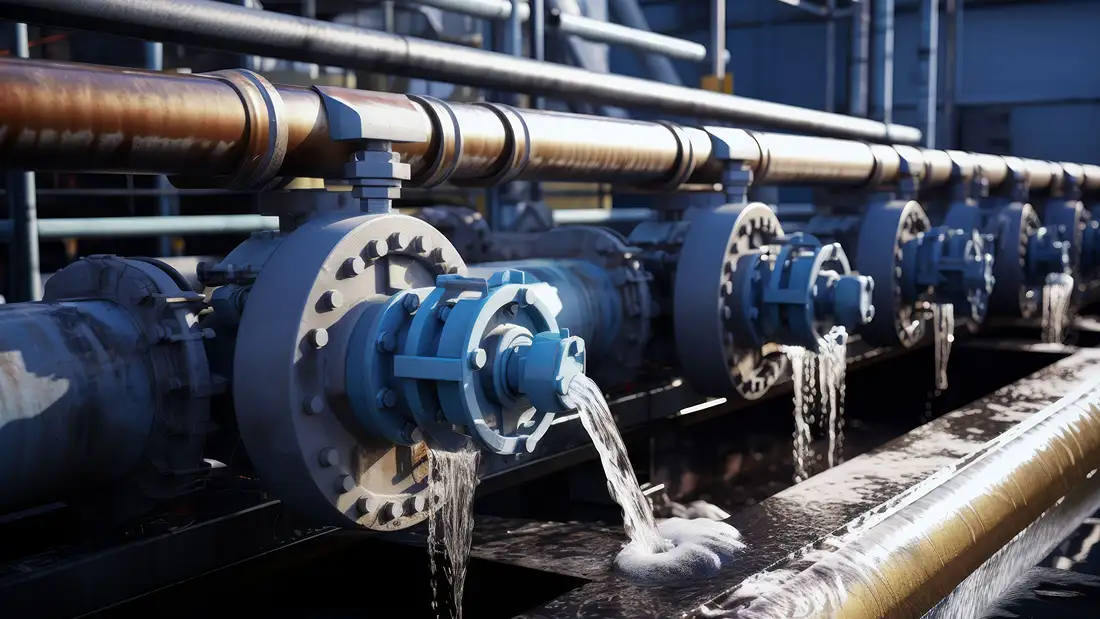
4. Technologies Used in Industrial Sludge Dewatering
Technological advancements have significantly improved the efficiency and effectiveness of industrial sludge dewatering processes over the years. These innovations are vital in ensuring that it becomes more efficient, cost-effective, and sustainable. A central technological development that has revolutionized the process is the use of industrial dewatering pumps. These pumps are specifically designed to manage the complex task of transporting thick, viscous sludge through various stages of the dewatering process.
Industrial sludge dewatering is a critical step in managing the large volumes of wastewater generated by various industries. The sludge produced during wastewater treatment contains a high percentage of water, making it difficult to transport and dispose of. The goal of industrial sludge dewatering is to separate the water from the solids, reducing the sludge volume and facilitating easier handling, transportation, and disposal. With the right technologies in place, industries can improve operational efficiency and significantly reduce their environmental impact.
Industrial Dewatering Pumps: A Key Technology in Industrial Sludge Dewatering
One of the most important innovations in industrial sludge dewatering is the development of industrial dewatering pumps. These pumps are designed to handle the challenging nature of sludge, which is often thick, viscous, and high in solids content. The primary function of industrial dewatering pumps is to transport sludge from one stage of the dewatering process to the next without clogging or damaging the equipment. These pumps are built to withstand the harsh conditions of dewatering, including high solids concentration and varying flow rates.
Without industrial dewatering pumps, the process of moving sludge through the dewatering equipment, such as centrifuges, belt presses, or screw presses, would be highly inefficient. Industrial dewatering pumps are crucial in maintaining continuous operation and ensuring the smooth and consistent flow of sludge. In fact, the right industrial dewatering pump is essential for optimizing the entire dewatering process. Choosing the wrong type of pump can lead to pump failures, interruptions in the dewatering process, and, ultimately, higher operational costs.
The efficiency of industrial dewatering pumps is also a key factor in minimizing the energy consumption of the overall industrial sludge dewatering process. Efficient pumps help reduce power usage, leading to cost savings and a smaller carbon footprint. Furthermore, these pumps can be customized to handle different types of sludge, ranging from those with high water content to those with a thicker, more solid consistency. This versatility makes industrial dewatering pumps indispensable across a wide range of industries, from municipal wastewater treatment to food processing and chemical manufacturing.
Automation and Real-Time Monitoring in Industrial Sludge Dewatering
In addition to the advances in industrial dewatering pumps, automation technologies have played a significant role in enhancing the efficiency of industrial sludge dewatering. Automated systems allow for real-time monitoring of critical parameters such as sludge moisture content, flow rates, and pump performance. These systems provide operators with valuable insights into the performance of the dewatering process, allowing them to make data-driven decisions that optimize efficiency.
With the integration of automation in industrial sludge dewatering, industries can adjust operational parameters in real time to ensure that the dewatering process is running at peak efficiency. For example, the moisture content of the sludge can be monitored continuously, allowing operators to make adjustments to ensure the optimal removal of water. This not only improves the quality of the dewatered sludge but also reduces the risk of over-drying or under-drying, both of which can be costly and inefficient.
Real-time monitoring tools also provide predictive maintenance capabilities for industrial dewatering pumps. By tracking the performance of pumps and other equipment in real-time, automated systems can identify potential issues before they lead to equipment failure. This proactive approach to maintenance minimizes downtime, ensures smooth operations, and extends the lifespan of the pumps and other equipment involved in industrial sludge dewatering.
Enhancing Operational Efficiency in Industrial Dewatering
The combination of industrial dewatering pumps and automation technologies is transforming industrial sludge dewatering into a more streamlined and energy-efficient process. With the ability to monitor, adjust, and maintain critical parameters in real-time, industries can optimize their dewatering processes, improving both performance and sustainability.
Through automation, industries can achieve better control over the industrial dewatering process, ensuring that the right amount of moisture is removed from the sludge, which in turn reduces waste and makes disposal more efficient. Furthermore, the integration of data analytics allows for better decision-making, ultimately leading to reduced operational costs and improved resource management.
In conclusion, the advancements in industrial sludge dewatering technologies, including industrial dewatering pumps and automation systems, have made the process more efficient, cost-effective, and environmentally sustainable. By continuously improving these technologies, industries can ensure that they are effectively managing their sludge waste while optimizing their operations for long-term success. Whether in wastewater treatment, food processing, or chemical manufacturing, the integration of these innovations plays a key role in improving the overall performance of industrial dewatering systems.

5. Benefits of Industrial Sludge Dewatering
Industrial sludge dewatering offers several benefits to industries, ranging from cost savings to environmental improvements. Here are some of the key advantages:
- Reduction in Waste Volume: By removing excess water, industrial sludge dewatering reduces the volume of the sludge, making it easier and more cost-effective to transport and dispose of. This is particularly beneficial for industries dealing with large quantities of sludge.
- Cost Savings: Dewatering helps industries save on landfill costs, transportation fees, and other disposal-related expenses. It also reduces the need for additional treatment and handling of wet sludge.
- Environmental Compliance: Proper industrial sludge dewatering helps industries meet environmental regulations by reducing the impact of sludge disposal. It ensures that sludge is treated and disposed of in an environmentally responsible manner.
- Resource Recovery: In some cases, dewatered sludge can be processed into compost, fertilizers, or even used as an energy source. This contributes to a circular economy and reduces waste.
6. Applications of Industrial Sludge Dewatering
Industrial sludge dewatering has a wide range of applications across various industries. Below are some of the key sectors that benefit from this process:
- Wastewater Treatment Plants (WWTP): Municipal and industrial wastewater treatment plants generate large volumes of sludge that require dewatering. Industrial sludge dewatering is essential for reducing sludge volume, enabling safer disposal, and facilitating resource recovery.
- Food Processing Industry: The food processing industry generates organic sludge that can be dewatered for disposal or reused as compost. Dewatering also helps recover valuable by-products from the sludge.
- Textile and Paper Mills: Sludge from textile and paper mills contains dyes, chemicals, and organic matter. Dewatering is used to manage this waste and prepare it for safe disposal or recycling.
- Oil and Gas Industry: The oil and gas industry generates sludge from drilling operations and production activities. Industrial sludge dewatering helps manage this waste, recover hydrocarbons, and minimize environmental impact.
- Mining and Chemical Industries: Mining and chemical industries generate hazardous sludge containing heavy metals and other harmful substances. Industrial sludge dewatering technologies ensure safe and compliant disposal while minimizing environmental harm.
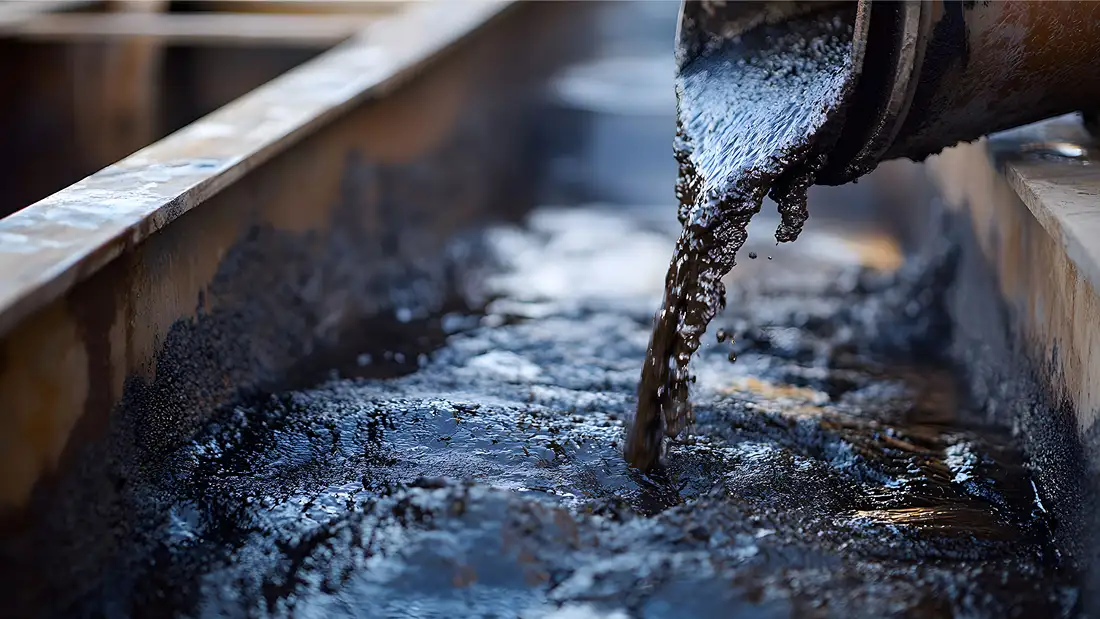
7. Conclusion
In conclusion, industrial sludge dewatering is a critical process for industries looking to minimize waste, reduce environmental impact, and recover valuable resources. By utilizing a combination of mechanical, thermal, chemical, and biological techniques, industries can efficiently reduce the volume of sludge and make it easier to handle and dispose of.
Industrial dewatering pumps are essential for transporting sludge through the dewatering process, ensuring that the sludge is processed efficiently and without damage to equipment. With the continued advancements in technology, such as automation and real-time monitoring, industrial dewatering is becoming more efficient, cost-effective, and environmentally friendly.
As industries increasingly adopt industrial sludge dewatering technologies, they contribute to a more sustainable future while ensuring compliance with environmental regulations. Whether in wastewater treatment, food processing, or mining, industrial sludge dewatering continues to play a pivotal role in waste management and resource recovery.




